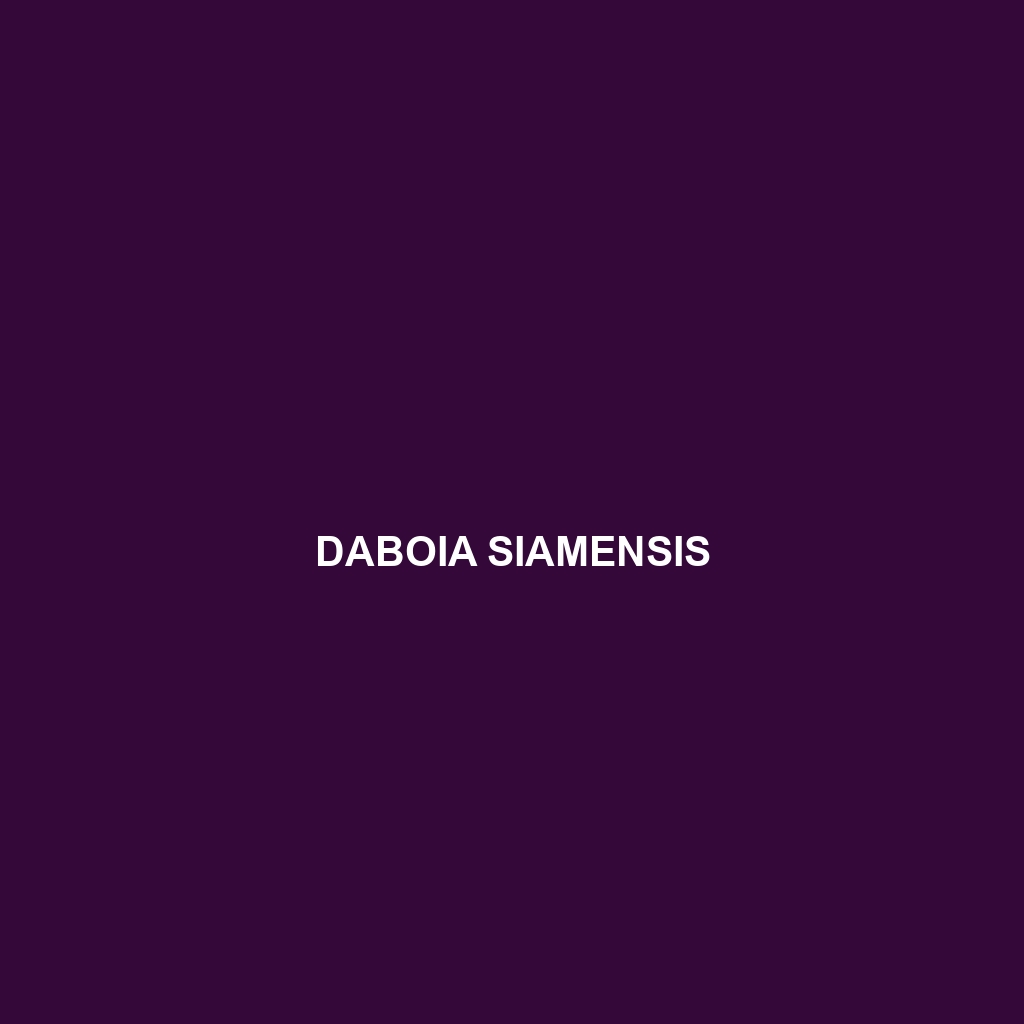Common Name: Daboia russelii
Scientific Name: Daboia russelii
Habitat:
Daboia russelii, commonly known as the Russell’s viper, is primarily found in the regions of South Asia, particularly in countries such as India, Pakistan, Bangladesh, and Sri Lanka. This terrestrial snake prefers a variety of habitats, including grasslands, scrub forests, and agricultural fields, often inhabiting areas close to human settlements where it can find ample prey. The species thrives in warm environments and is commonly located at altitudes ranging from sea level to moderately elevated terrains.
Physical Characteristics:
Russell’s viper typically reaches an average length of 1 to 1.5 meters, though some individuals can grow larger. The snake is recognizable by its triangular-shaped head and thick body. Its coloration consists of a light brown or sandy background with dark brown or black patterns that resemble spots or stripes, which provide excellent camouflage against the underbrush. The most distinctive feature is its large, cat-like eyes with vertically elliptical pupils, which enhance its vision, especially at night.
Behavior:
Daboia russelii is primarily nocturnal and is known for its ambush hunting behavior. It relies on its camouflage to catch prey, often remaining motionless, waiting for small mammals, birds, and lizards to approach. This species is generally solitary and becomes more active during the warmer months. When threatened, it may display defensive behaviors such as coiling and hissing, or it may resort to striking swiftly with little warning, which makes it one of the more dangerous snakes in its range.
Diet:
Russell’s viper primarily feeds on small mammals, including rats and mice, as well as amphibians and birds. The snake utilizes its potent venom for subduing prey, which it injects through long fangs. Its diet reflects typical habits of a sit-and-wait predator, spending considerable time in ambush before striking. As a result, it plays a critical role in controlling rodent populations in agricultural areas.
Reproduction:
Daboia russelii exhibits ovoviviparous reproduction, which means that the female gives birth to live young rather than laying eggs. Breeding typically occurs during the monsoon season, with gestation lasting approximately 4 to 5 months. A single clutch can contain between 10 and 30 live young, which are fully independent upon birth, showcasing a notable level of maternal investment.
Conservation Status:
Currently, Daboia russelii is listed as ‘Near Threatened’ by the International Union for Conservation of Nature (IUCN). Habitat loss due to agricultural expansion, urbanization, and pesticide use poses significant threats to its population. Education and awareness are critical in mitigating human-snake conflict, which often leads to the demise of this species in many areas.
Interesting Facts:
One fascinating aspect of Daboia russelii is its significance in local culture and medicine, particularly in traditional practices. Additionally, this species is known for its association with various myths and legends in South Asian communities. The Russell’s viper also contributes greatly to antivenom production, making it paramount in medical research.
Role in Ecosystem:
Daboia russelii plays a vital role in its ecosystem as both a predator and prey. By preying on rodents, it helps regulate populations of these animals, which, if unchecked, could lead to significant agricultural damage. Furthermore, the snake serves as food for larger predators, contributing to the food web dynamics in its habitat.
